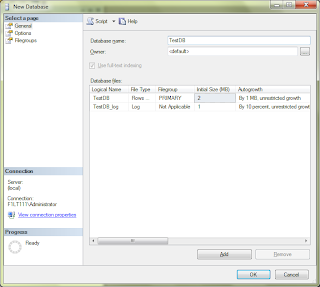DBMS stands for ... Database Management System.
This system is assisting us to manage/store the Data accurately and very easiest way
DBMS is a collection of programs which helps to handle the data in following ways..
* Adding Data
* Deleting Unnecessery Data
* Modifying the Existing Record
A DBMS support various functions like data security, data integrity, data sharing, data concurrence, data independence, data recovery etc. However, all database management systems that are now available in the market like Sybase, Oracle, and MS-Access do not provide the same set of functions, though all are meant for data management.
* Deleting Unnecessery Data
* Modifying the Existing Record
A DBMS support various functions like data security, data integrity, data sharing, data concurrence, data independence, data recovery etc. However, all database management systems that are now available in the market like Sybase, Oracle, and MS-Access do not provide the same set of functions, though all are meant for data management.











